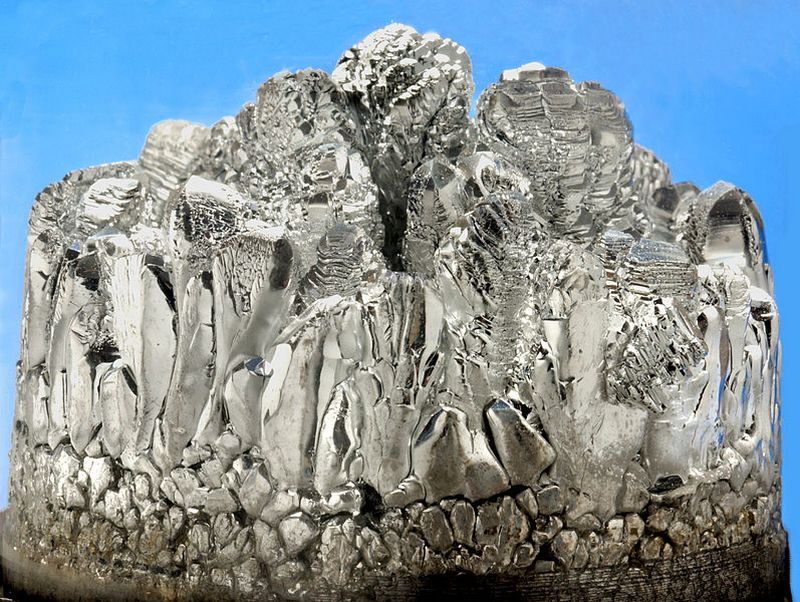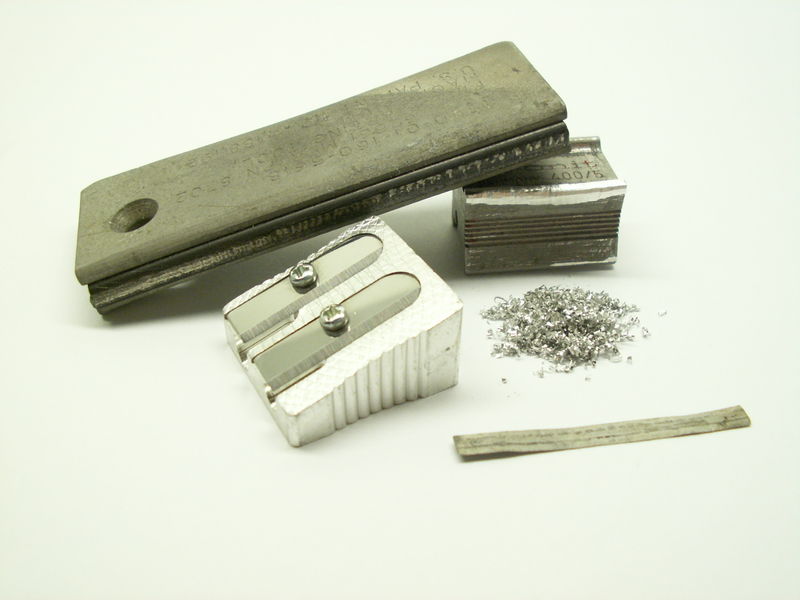Researchers Develop an Outstandingly Strong But Light New Metal
Microscopic view of the surface of the new super strong metal. Image credit: UCLA Scifacturing Laboratory via Phys.org
A team headed by researchers from the Samueli School of Engineering and Applied Science of the University of California Los Angeles recently developed a new metal described as super strong but lightweight. This new material is made possible with the use of nanoparticles and is expected to have numerous applications, offering a more durable alternative to a number of metals currently being preferred because of their strength and weight advantages.
Composition
More aptly referred to as a metal nanocomposite, this new metal is composed of around 14% silicon carbide and 18% magnesium. This new ultra durable metal was created with the help of nanotechnology. It is made up of magnesium infused with an evenly dense layer of ceramic silicon carbide nanoparticles smaller than 100 nanometers in width.
Magnesium is an abundant element and is used in producing alloys that are employed in a wide range of applications. However, it is a highly reactive alkaline earth metal that would easily corrode on its own. It is also highly flammable, capable of producing flame temperatures of up to 3,100 °C (3,370 K; 5,610 °F). That’s why it is only used as an alloy (mixed with other metals such as manganese, copper, zinc, aluminum, silicon, and zirconium).
This new metal was made possible with the development of a novel method for dispersing and stabilizing silicon carbide nanoparticles on molten metals. The researchers also came up with a scalable manufacturing method that opens the possibilities for creating more high performance lightweight materials. With the new methods, the researchers were able to evenly disperse ceramic nanoparticles on the surface of molten magnesium and successfully enhance the strength of the metal. No other groups in the past have successfully dispersed ceramic nanoparticles on molten metals according to Xiaochun Li, the lead researcher of the project. Scientists already know that it is possible to use nanoparticles in enhancing the strength of metals without adversely affecting their plasticity but nobody has successfully produced something palpable out of the idea yet. This nanotechnology-based material strengthening has some similarity to what was achieved with the development of a shatter-proof glass through the application of a copper nanowire coating on glass, as demonstrated by researchers from the University of Akron in Ohio. It is different, however, because it appears to be a reversal of application (explained below).
Characteristics
As mentioned, this new magnesium alloy metal is extremely strong but lightweight. It is a light structural metal with an impressive high specific strength (the specific weight a material can support before it breaks). It also exhibits excellent modulus or a very high ratio of stiffness to weight. Even better, this new metal was tested to be able to maintain its strength, plasticity, stiffness, and durability while exposed to high temperatures.
A structural metal, by the way, is a load-bearing metal. It is a metal designed to be used as support material for buildings, machines, and vehicles. It should be strong and have a definite shape but should be light at the same time. At only around 66% of the density of aluminum, magnesium is regarded as the lightest structural metal. If it can be made even harder than aluminum, it is bound to become a more prefered material for machines and even high end consumer electronics such as smartphones and cameras.
Hurdling the Ceramic Infusing Problem
It took some time before scientists have made it possible to infuse ceramic nanoparticles, silicon carbide in particular, into molten metals because of plasticity and clumping problems. Ceramic nanoparticles are already known to have the ability to enhance the strength of metals but they tend to make the metals less malleable. Also, the extremely tiny ceramic nanoparticles are predisposed to clumping. They don’t disperse evenly. They naturally attract each other and form lumps as they are being dispersed on a surface.
To address these problems, the researchers dispersed the nanoparticles on a molten magnesium zinc alloy. This method relies on the kinetic energy in the movement of the particles. As such, the dispersion of the particles is stabilized and clumping is prevented.
As mentioned earlier, there is a slight similarity but a major difference in this magnesium-hardening technology to how nanoparticles were used to enhance the strength of glass. In the copper nanowire glass strengthening method, metal (copper nanowires) was the one used to enhance the strength of a brittle material (the glass). Here, the brittle ceramic silicon carbide is the one used to enhance the strength of the malleable metal magnesium.
Applications
This superbly durable new metal is expected to become useful in the manufacture of lighter but more durable cars, spacecraft, airplanes, drones, and for the chassis of high end electronic devices like smartphones, tablets, cameras, and laptops. The enhanced strength without adding more weight or density is a big advantage in making vehicles and spacecraft more efficient. Similarly, this new metal is an advantageous option for the chassis of gadgets. The new iPhone will surely avoid another Bendgate problem if Apple decides to use this new material.

